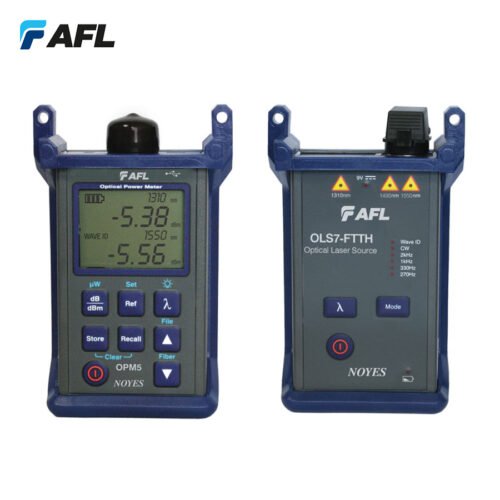Methods fibre testing equipment helps data integrity
All You Required to Find Out About Robotic Vision and Its Applications in Advanced Optical Measurement Equipments
Robotic vision represents a considerable innovation in the intersection of computer system vision, expert system, and artificial intelligence. This modern technology boosts the accuracy of optical measurement systems, allowing real-time data analysis and enhanced top quality control. Its effect spans numerous industries, from manufacturing to healthcare. The evolving landscape of robotic vision increases concerns regarding future capacities and applications. What advancements exist ahead in this transformative field?
Comprehending Robotic Vision: Trick Concepts and Technologies
Robotic vision encompasses the modern technologies and approaches that enable machines to translate and comprehend visual details from their atmosphere. This area integrates components of computer system vision, expert system, and artificial intelligence to assist in automated decision-making based upon visual information. Secret concepts consist of picture handling, which includes the improvement and analysis of images to extract significant functions, and item recognition, which enables makers to recognize and identify things within a scene.

The Combination of Robotic Vision With Optical Dimension Equipments
As industries significantly require accuracy and efficiency, the integration of robot vision with optical measurement systems has become a transformative method. This synergy permits robots to regard and interpret their environments, boosting the ability of optical dimension systems to evaluate and assess things with unparalleled precision. By outfitting optical sensing units with innovative imaging innovations, robotic vision makes it possible for real-time data collection and handling, promoting immediate modifications to dimension criteria.
The mix equips automated systems to find variants in dimensions, surface area quality, and alignment, which are vital in quality control processes. Improved formulas, such as equipment knowing, additional boost this integration by enhancing the systems' capacity to adjust to various settings and circumstances. The combination not just simplifies measurement procedures yet likewise reduces mistakes, making certain that items meet rigorous sector criteria, consequently solidifying the duty of robot vision in the future of optical dimension systems.
Applications of Robotic Vision in Production
In modern-day manufacturing settings, making use of vision systems has actually changed manufacturing processes by making it possible for makers to do tasks with impressive precision and rate. Robotic vision systems are significantly employed for quality assurance, where they check products for flaws and guarantee adherence to specs. These systems utilize cams and advanced formulas to analyze products in real-time, significantly decreasing the risk of human error.
Additionally, robot vision facilitates automation in setting up lines, permitting robotics to precisely recognize parts and construct them with very little downtime. This innovation also improves stock administration, as vision systems can keep an eye on stock degrees and discover disparities, guaranteeing a smooth supply chain.
Robotic vision help in the application of clever factories, where information from vision systems can be incorporated with other innovations to optimize process (optical measurement system). Overall, the applications of robotic vision in manufacturing show its important function in enhancing effectiveness, quality, and efficiency across different industries
Robotic Vision in Health Care: Transforming Individual Treatment

In rehab, robotic vision aids in keeping an eye on client progression and tailoring therapy sessions to specific needs. It sustains doctor by automating tasks such as data collection and client surveillance, enabling even more time to focus on straight patient interaction. Additionally, robot vision improves telemedicine by allowing remote diagnosis and digital assessments, bridging the space in between patients and doctor. In general, the application of robot vision in healthcare is reinventing person care, leading to improved results, performance, and individual complete satisfaction.
Future Trends and Growths in Robotic Vision Technology
The rapid development of robot vision technology find promises to better enhance its applications across different markets, consisting of health care. Future fads indicate a significant change towards including synthetic knowledge and equipment understanding, allowing systems to gain from huge datasets and boost precision in time. Improved sensing unit technologies and deep learning algorithms are expected to refine item recognition abilities, enabling robots to translate complex settings extra properly.

The assimilation of increased fact (AR) with robot vision will likely change exactly how robots help in medical procedures and diagnostics. This synergy will certainly facilitate real-time data visualization, improving decision-making processes. In addition, miniaturization of parts will certainly cause even more small and functional robotic vision systems appropriate for a range of tasks. As these developments unravel, sectors will certainly witness boosted automation and efficiency, strengthening robot vision as a foundation of innovative technical options.
Frequently Asked Concerns
What Are the Main Parts of a Robot Vision System?
The primary components of a robotic vision system consist of cameras for image capture, cpus for information analysis, algorithms for analysis, and actuators for movement. Together, these components enable robots to view and connect with Home Page their atmosphere properly.
Exactly How Does Robotic Vision Improve Accuracy in Measurements?
Robotic vision boosts measurement precision by utilizing sophisticated imaging innovations, allowing exact item discovery and spatial analysis. This click here for more capacity lowers human error, increases repeatability, and enables for real-time adjustments, ultimately enhancing general dimension reliability and efficiency.
What Industries Advantage Most From Robotic Vision Modern Technology?
Various sectors profit greatly from robot vision technology, consisting of production, health care, farming, and logistics. These industries make use of boosted precision, effectiveness, and automation, bring about improved productivity and reduced functional prices in their corresponding processes.
Can Robotic Vision Systems Operate In Low-Light Conditions?
Robotic vision systems can indeed function in low-light conditions, utilizing sophisticated sensing units and algorithms to enhance picture quality. This ability permits them to execute efficiently in numerous atmospheres, consisting of commercial and surveillance applications, despite having marginal lighting.
What Are the Prices Related To Implementing Robotic Vision?
The expenses associated with executing robotic vision vary substantially, influenced by parts such as video cameras, software, and combination. Additional expenses include upkeep, training personnel, and prospective upgrades to existing systems, which can collect in time.